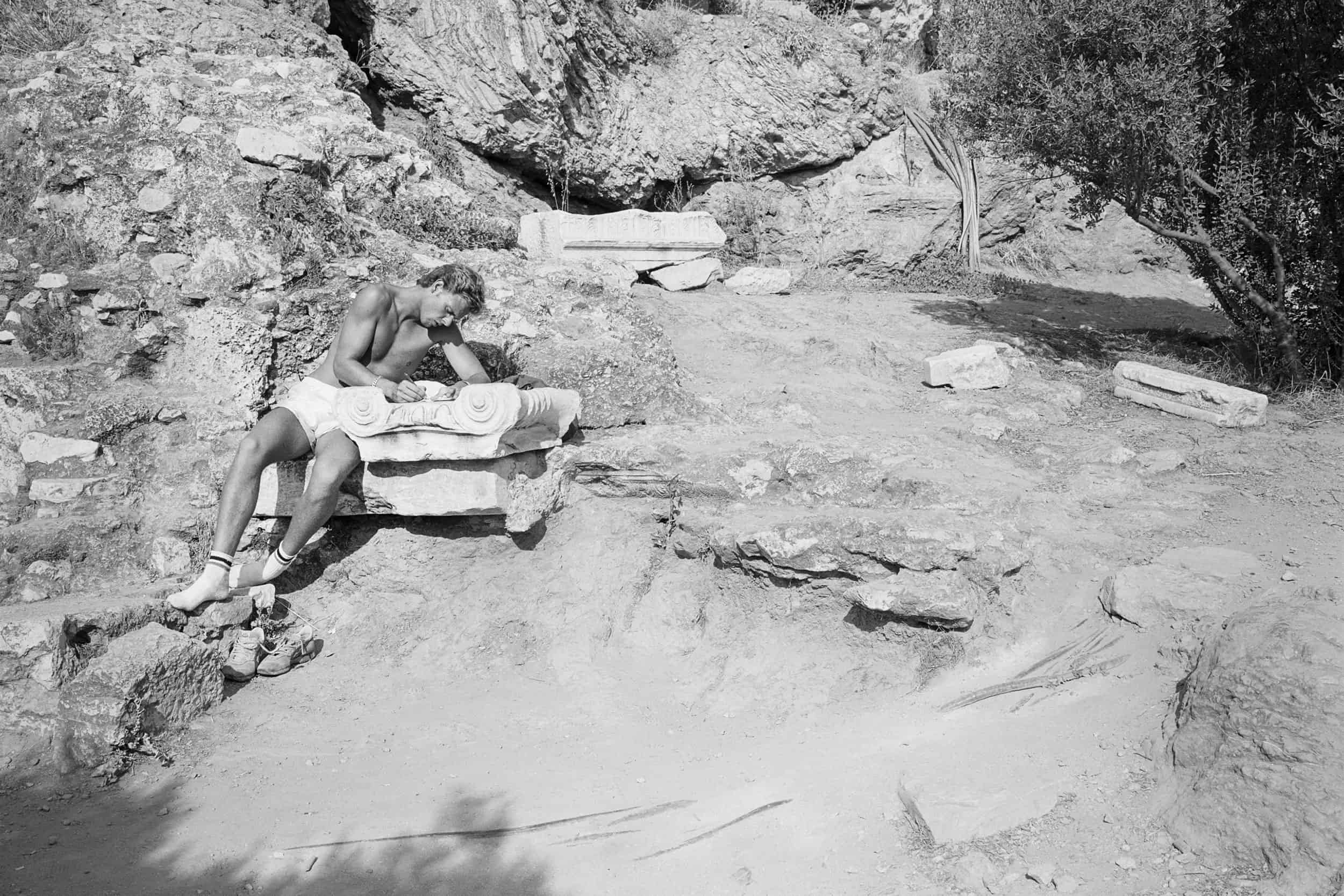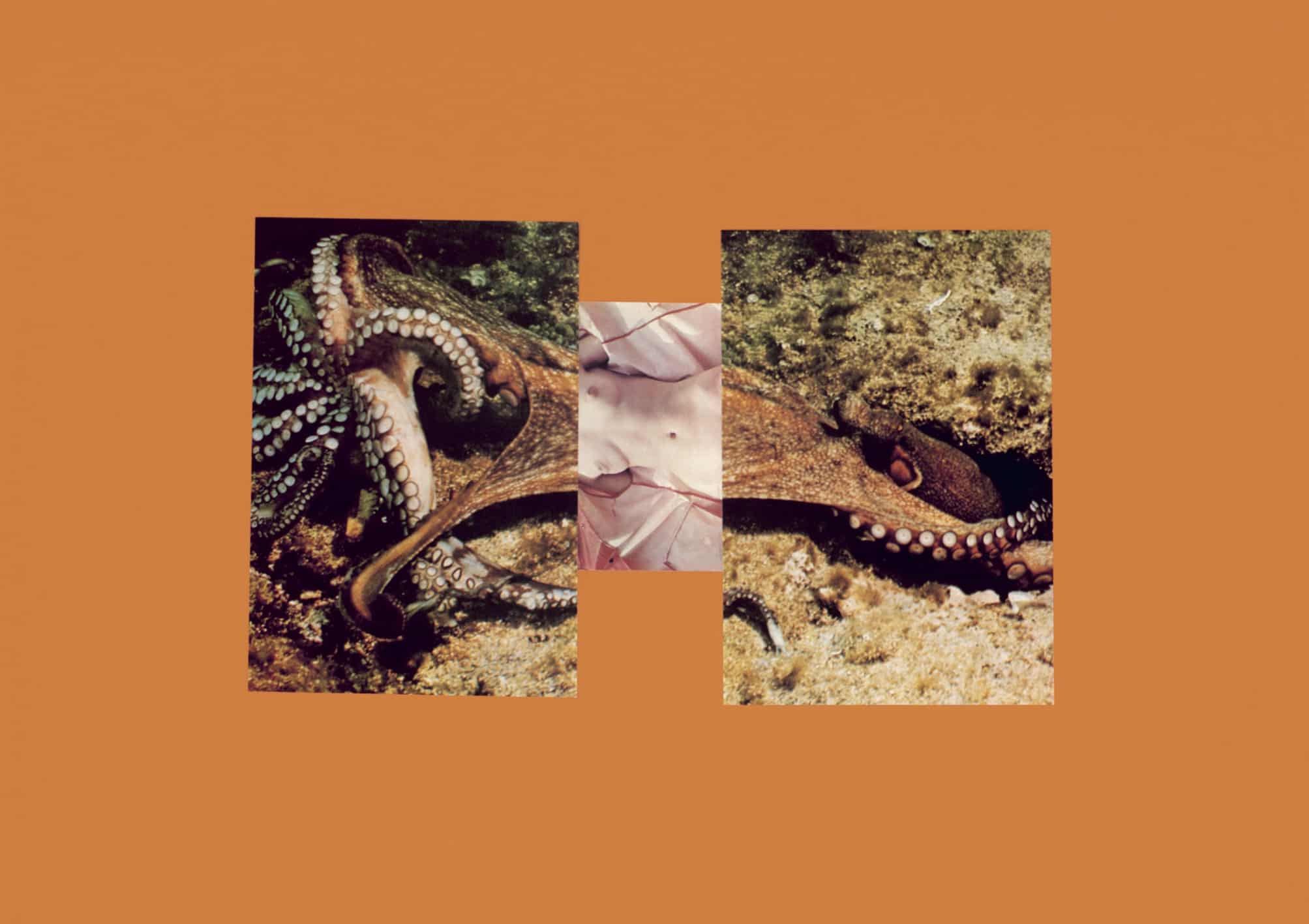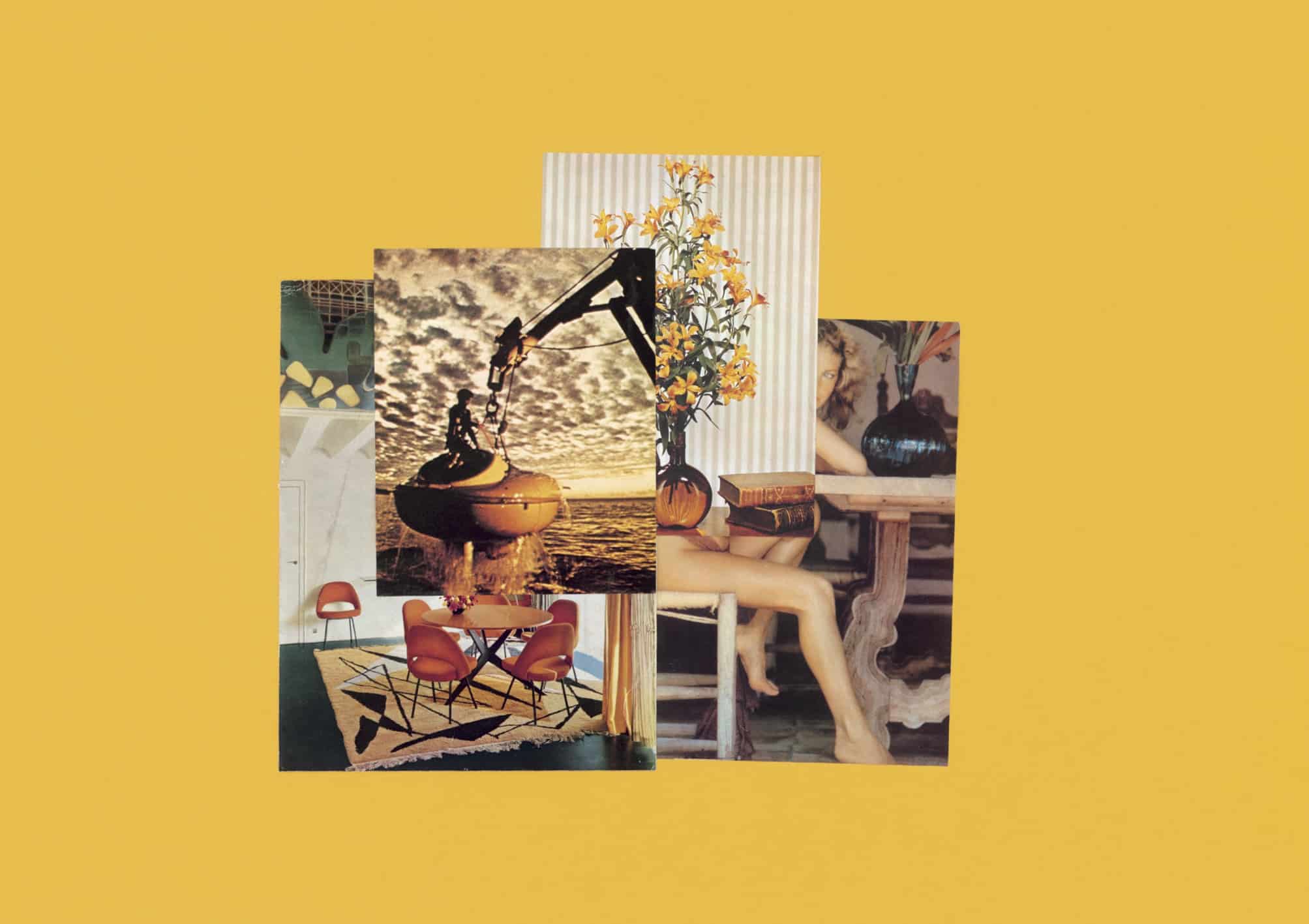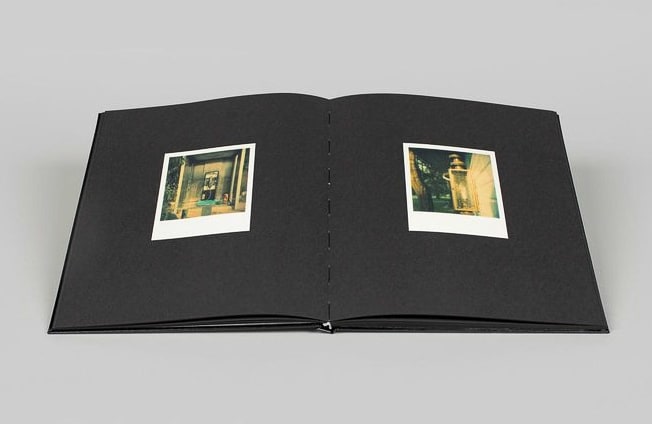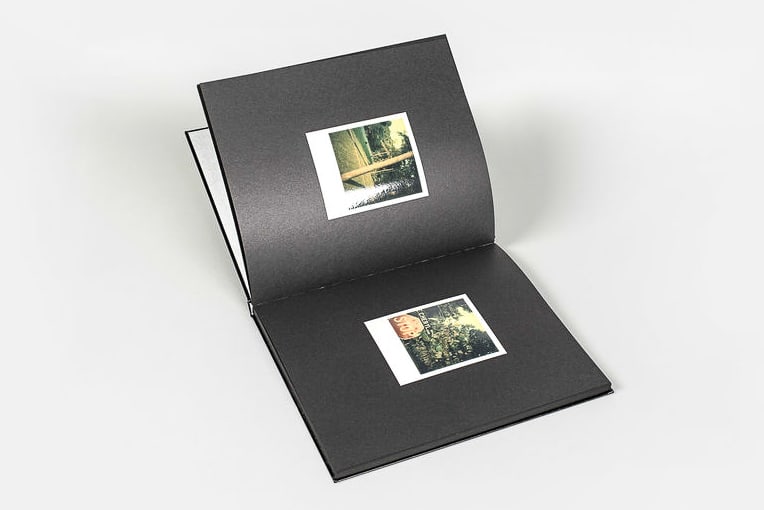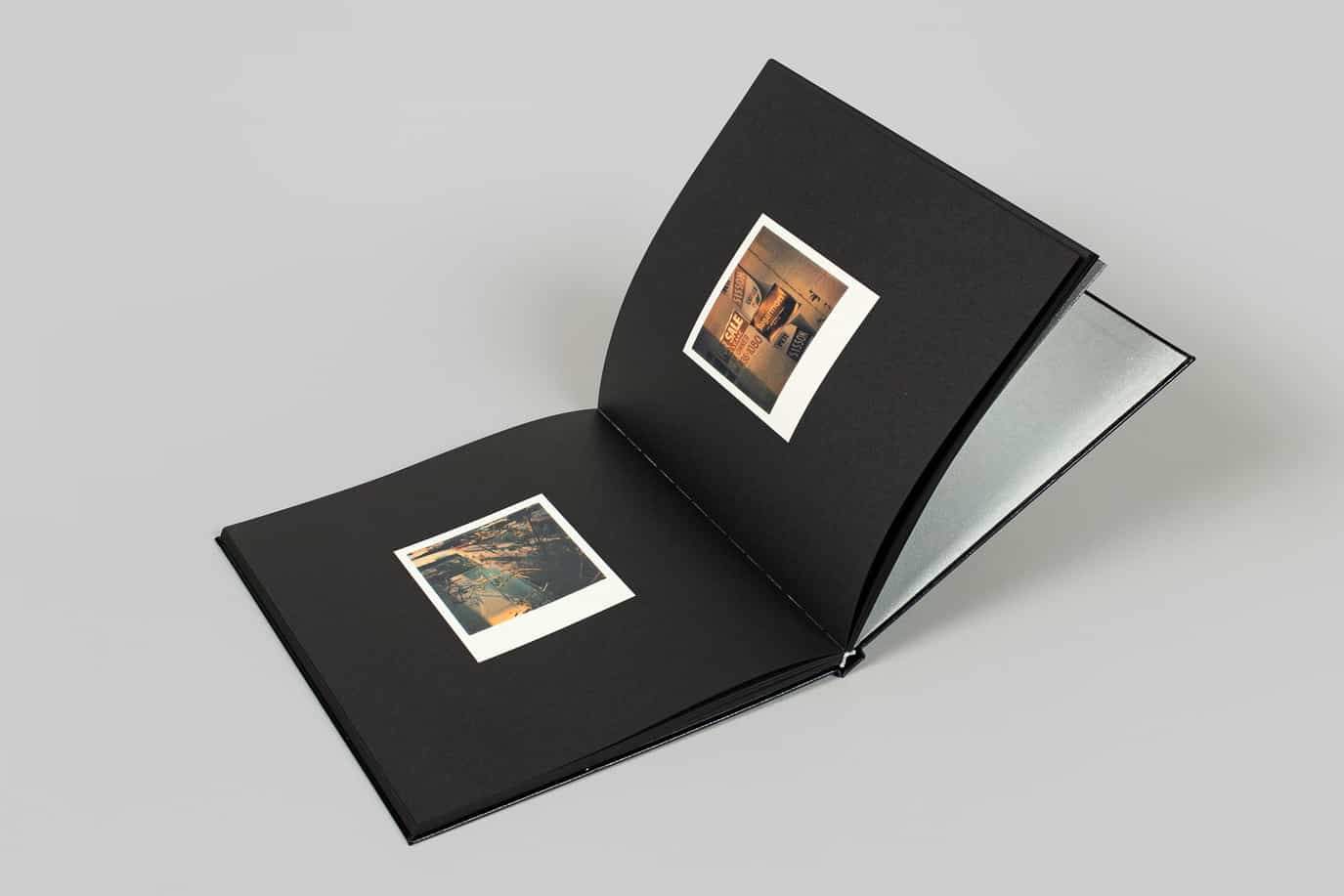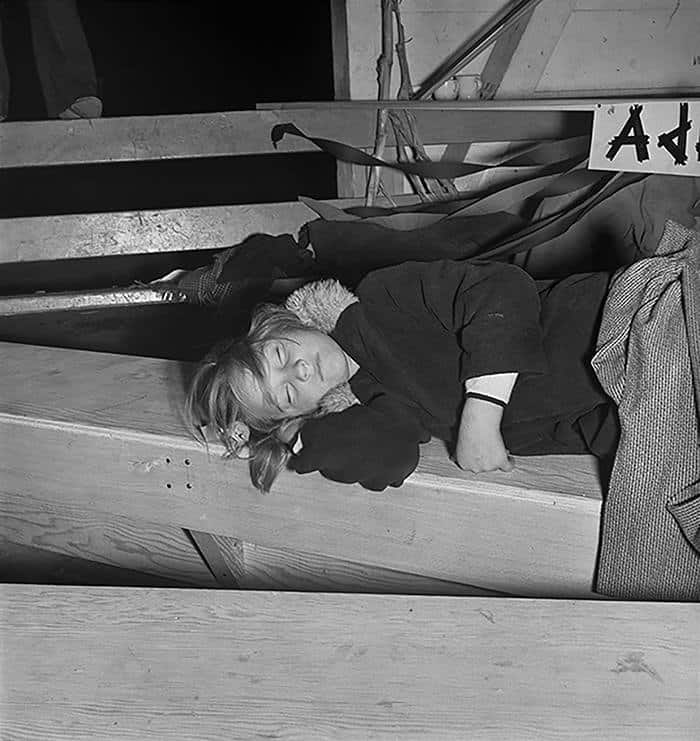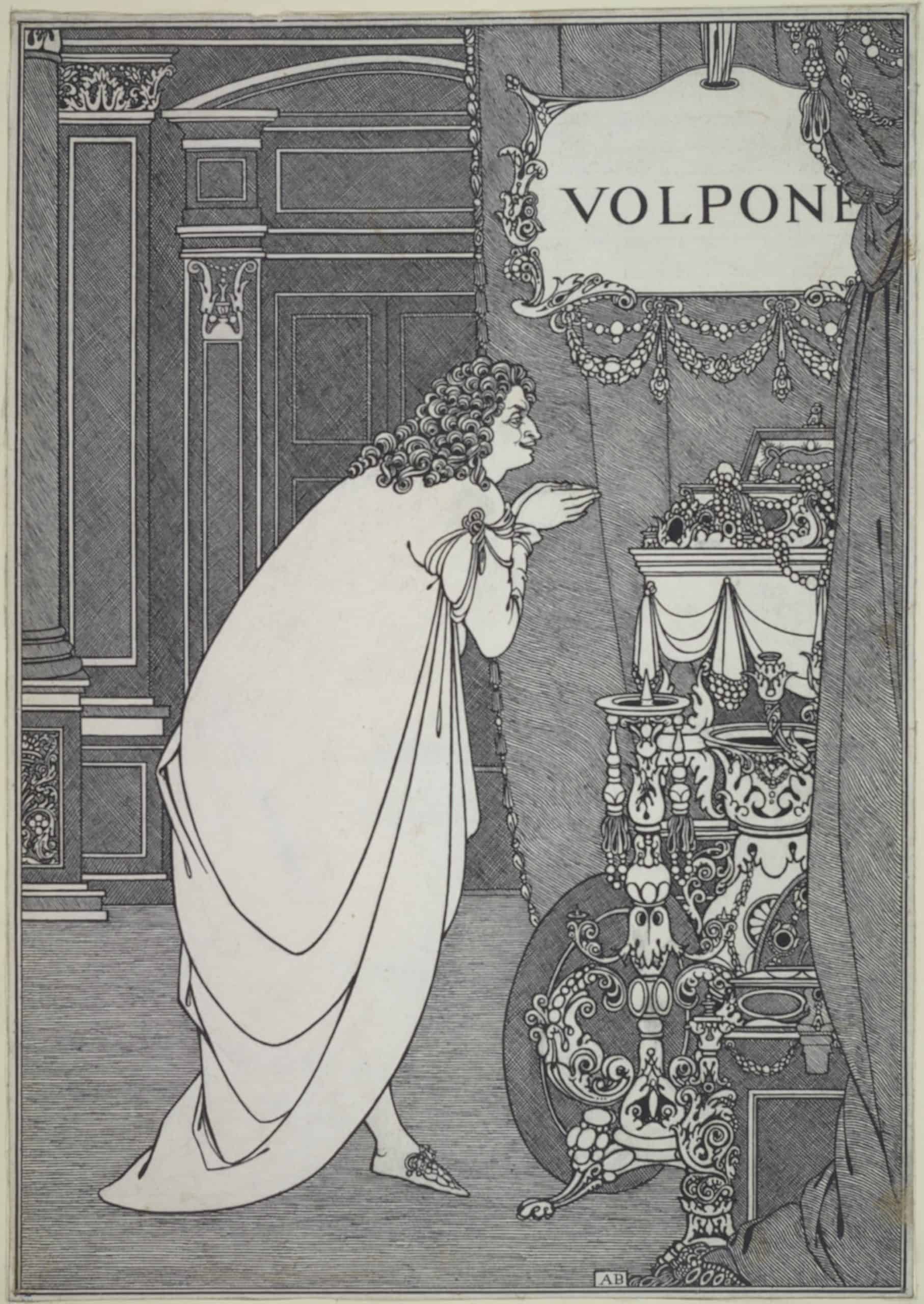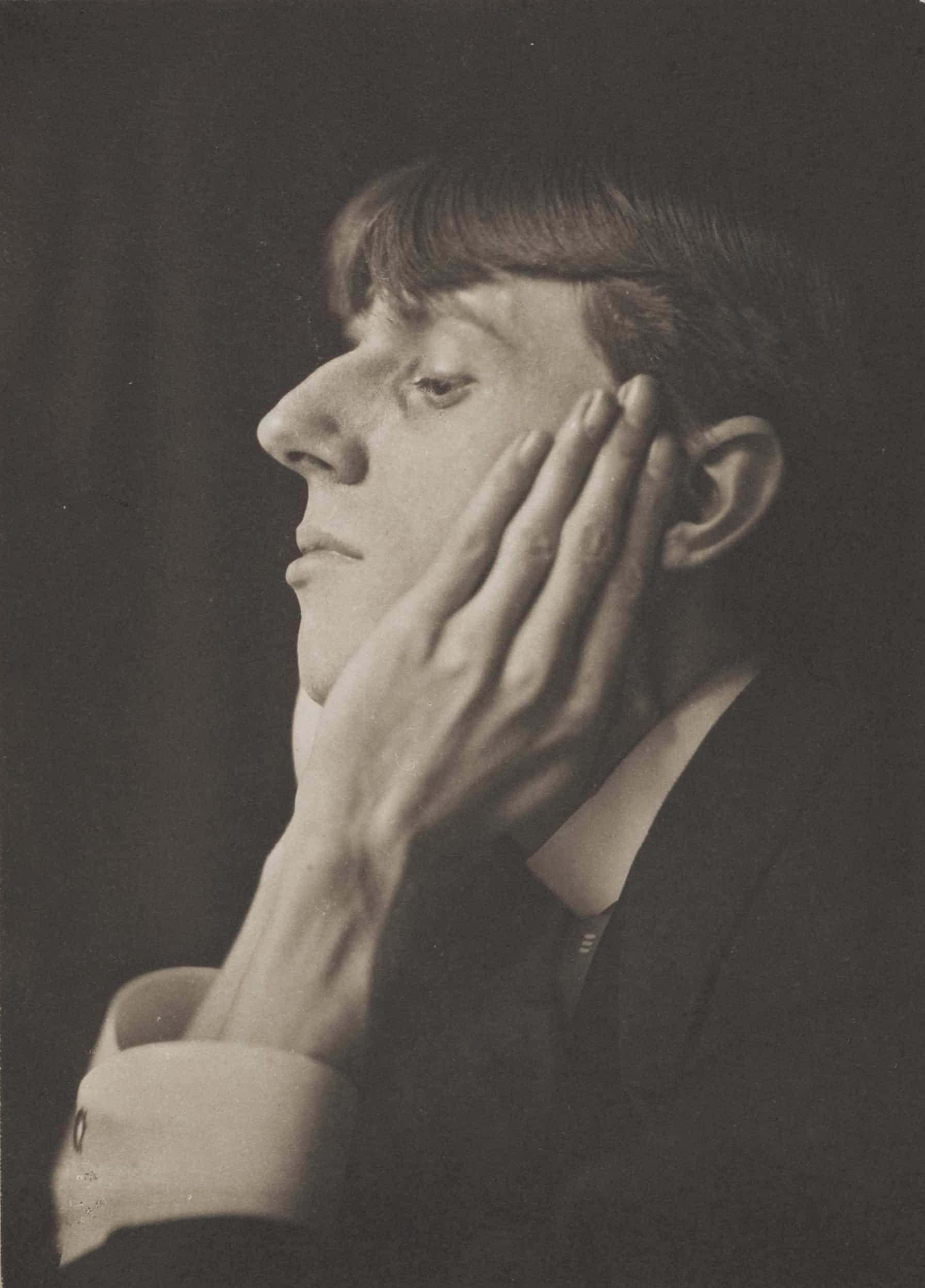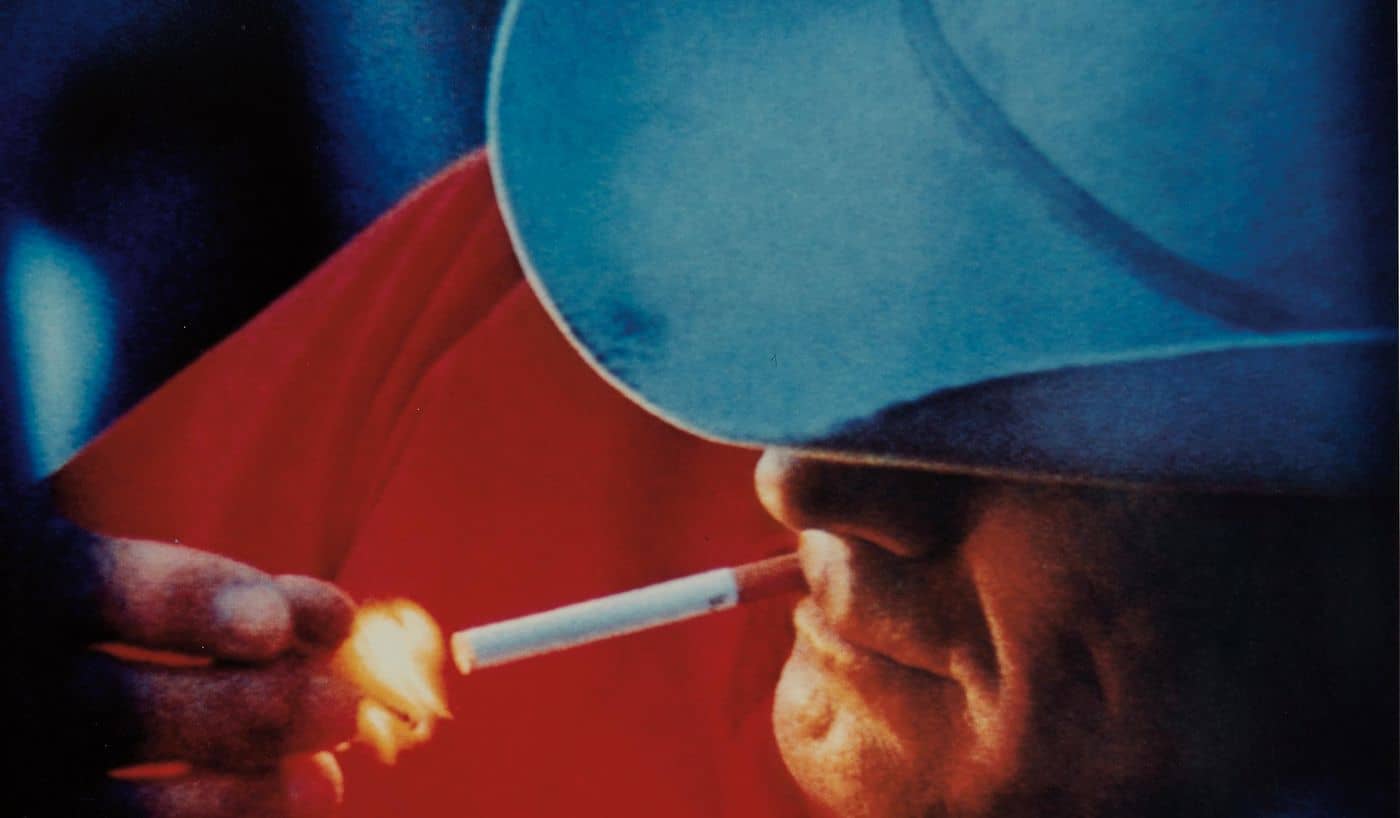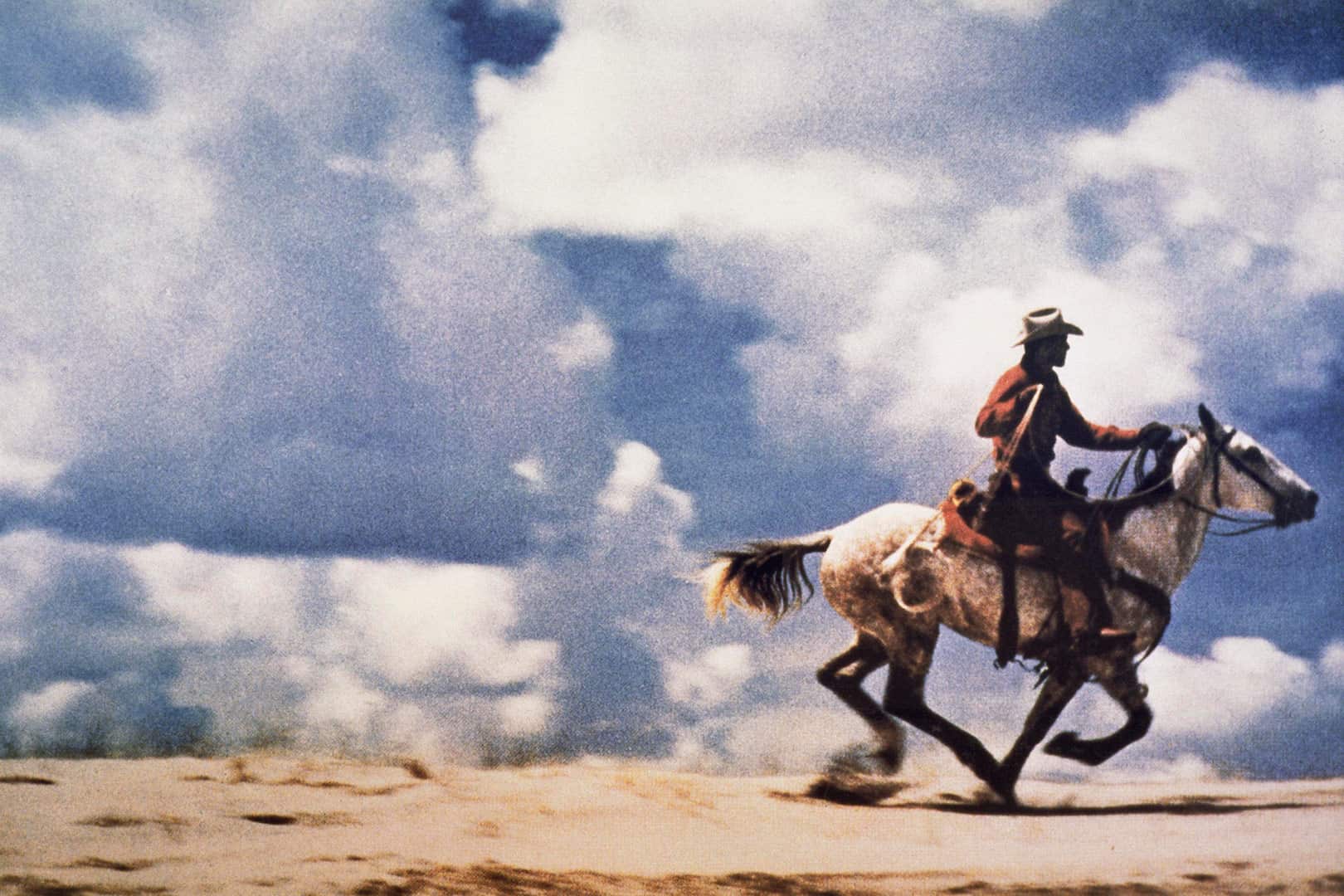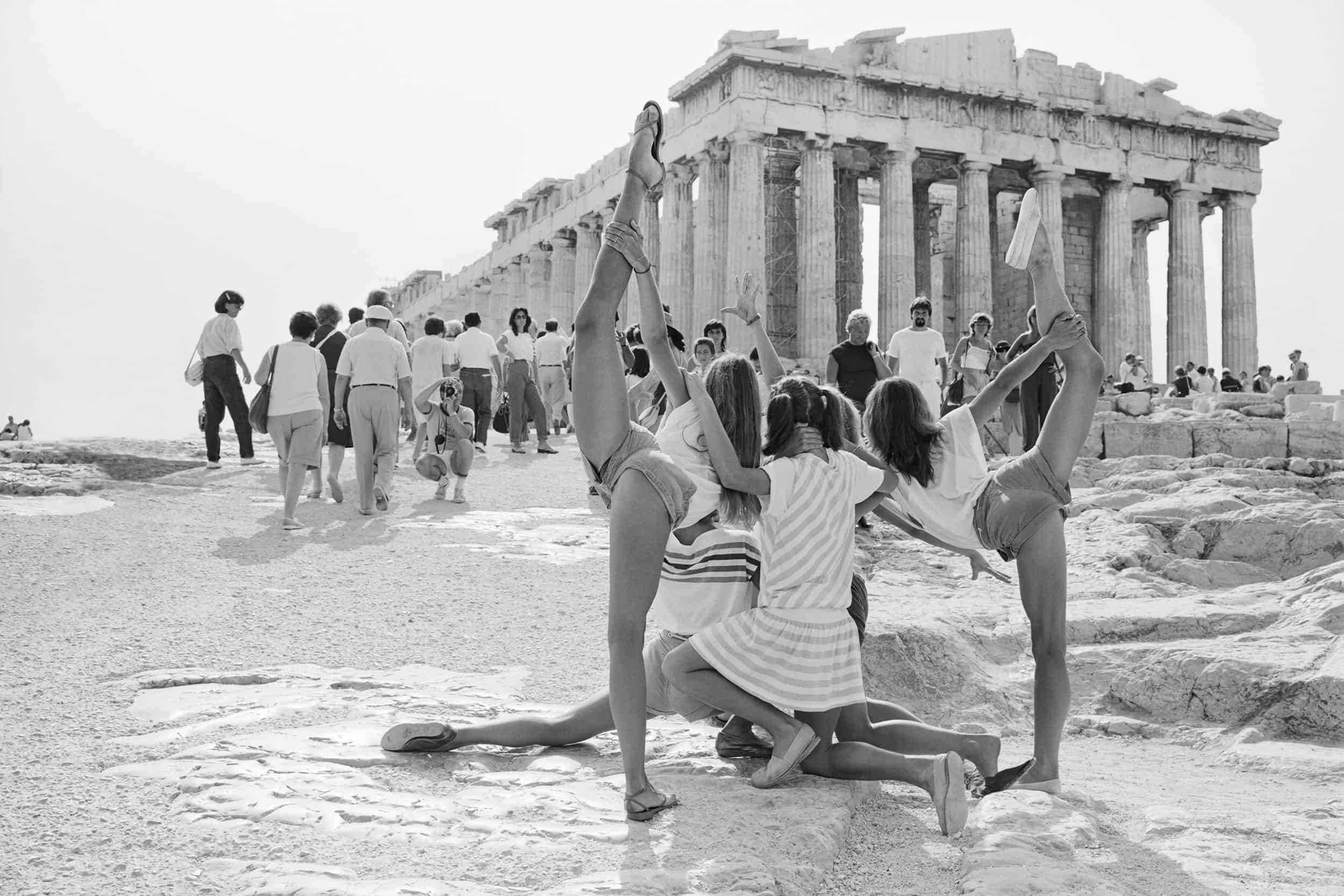
On the Acropolis © Tod Papageorge
In the challenging times of disheartening news, we all crave moments of inner peace and uplifting breeze. As remote work and social isolation continue, literature has taken on special meaning and the value of losing yourself in an exceptional book has never seemed more apparent. Book Bliss introduces you to seven new titles in the hope that they will provide much needed respite during the incomprehensible times of disease and pestilence. The common thread running through all of them is a dreamy, quite often whimsical or escapist atmosphere and a well-articulated sense of urgency to find beauty in everyday life and immediate surroundings. Let riveting art books take you on an inspirational journey through stimulating notions, far-flung destinations, and soothing moments.
Time is No Longer Round
Do you remember those blissful moments of lying on the forest floor, surrounded by the smell of resin and dewy grass? You stare at the sky above, your eyes guided by the lofty distant treetops. You breathe the whole forest in. Featuring photographs taken on the remote Island of Kokar in Finland, Santeri Touri’s new release is all about that dreamy experience.
All the images in this exquisite book have a specific painterly quality to them, which only adds to the oneiric character of the portrayed nature. Wide shots of giant trees with their curvy intertwined branches share pages with striking photographs of a dramatic, stormy sky — some of them enlarged to blurry close-ups printed on a thin matte paper. Santeri Touri, one of the best-known figures from the Helsinki School, has created compositions of spectacular trees, tangled branches, and magnificent clouds that are in fact sophisticated montages made up of countless photos arranged side-by-side or on top of each other. Although one cannot deny associations with Romanticism, palpably perceptible throughout the work, it is clearly a Romanticism reshaped through the lens of a modernist perspective.
We often crave for some quiet time and need a short moment of inner peace, especially when dealing with ongoing anxiety and low spirits. Time Is No Longer Round is not only about the astonishing Nordic nature but also, and above all, it is an uplifting book about immersing in a wild forest and floating in the infinite sky. As Alistair Hicks beautifully put it in the essay to the book: “as one loses oneself in [Santeri Tuori’s] work, time may no longer be round, thoughts may not be controllable, but we compulsively follow the endless cyclical patterns, the branches above swaying with our canopy of thoughts.”
Santeri Tuori’s Time is No Longer Round has been published by Hatje Cantz
Santeri Tuori, Sky #29, 2015, Courtesy Gallery Taik Persons
Santeri Tuori, Forest #3, 2010 – 2011, Courtesy Gallery Taik Persons
Santeri Tuori, Sky #27, 2015, Courtesy Gallery Taik Persons
On The Acropolis
At the time when international travels have become drastically limited, the American artist Tod Papageorge sends us 81 black & white postcards from Greece.
In 1983 and 1984 the acclaimed photographer spent one month each summer in Athens. He stayed at a local hotel, just five minutes from the most visited attraction in Greece — the Acropolis. Every morning he would steadfastly climb the rocky hill to capture crowds of tourists pouring onto the ancient citadel. Featuring Parthenon and a number of other temples and archeological sites, the Acropolis became Papageorge’s personal studio perfectly lit by the blazing summer sun. Indeed, the works are simply infused with enveloping whiteness and it is the sheer intensity of the omnipresent light that defines the photographs.
In Papageorge’s vistas people are resting, reading, yawning, sunbathing, or just lying among majestic white ruins. Vacationists fool around, take commemorative photos accidentally portraying awestruck bystanders, relax on massive stone blocks, and simply make the most of those buoyant holiday moments. The modern mingles with the ancient in a jaunty manner.
Being an exceptional observer, the American artist inimitably caught fleeting glimpses of enjoyment and perkiness at their purest. Despite the photographs being simply black and white, the size of the book and quality of print allow you to virtually immerse into that sleepy, dreamy atmosphere of a hot August day. The more you delve into the book, the stronger nostalgic melancholy and saudade radiating from the series you feel. Those enchanting photographs taken in the blazing summer heat evoke the bygone days we all cherish in our hearts. If Papageorge were to repeat his project now, he would almost surely capture people staring at their phones, oblivious to the marvels at hand, sidelined and unable to reflect on the mythical, magical beauty of the ancient relicts. In a way, On The Acropolis gives a poignant account of thoughtful times and events that won’t come back.
The book finishes with a few whitewashed pictures of Acropolis taken at the end of a day: images of emptiness gracefully encapsulating the myth and mystery. Motionless and unaltered by the passing time, archaic ruins are the only immutable element of the ever-changing world.
Tod Papageorge’s On The Acropolis has been published by Stanley/Barker
On the Acropolis © Tod Papageorge
On the Acropolis © Tod Papageorge
On the Acropolis © Tod Papageorge
Handbook of the Spontaneous Other
This whimsical book comprises a series of 59 enticing and often risqué collages created from a wide range of Western European and North American visual materials from the 1960s and 1970s. Using images from National Geographic, travel catalogues, adverts, and porn mags, Gegisian skilfully merged photographs of nature with human body and erotic imagery prevalent in Western popular culture.
The author’s mixed Greek-Armenian heritage played an important role in the conceptualisation of the book. Having lived in Western Europe and the USA for decades, Gegisian knows how the capitalist machine of assimilation works in practice. Although cleverly liberated from their original contexts, the lurid technicolour images are filled with references to constant self-improvement, excessive labour, and consumerism stimulating Western society. The Spontaneous Other is in quest of an alternative approach that would allow for expressing pleasure and encountering world’s phenomena in a more candid and impartial way.
Colour is the predominant organising factor and forms an indispensable part of the narrative. Handbook of the Spontaneous Other is constructed as a journey around a colour wheel: starting with white, yellow, and orange pages and finishing with green, blue, and black ones. Visually alluring collages range from simple and humorous coalescences of two photographs to intricate juxtapositions of multiple images. Gegisian elegantly plays with shape and colour alignment, creating jarring contrasts that only strengthen glaring charm and elusive sassiness. The book finishes with an arresting poem that explores the existence and interdependence of images. The artist’s ability to operate with words is on a par with her flair for ingeniously using images culled from vintage magazines. “Our gaze creates a pulsating rhythm,” the poem reads. “The rhythm of the pendulum moving back and forth. Like a rainbow. Depositing possibilities at either end.”
Handbook of the Spontaneous Other is a powerful testimony to the sophistication of Gegisian’s visual logic and mastery in creating collages that are intelligently perplexing and delightfully pleasing at the same time. This humdinger of an art book delivers some of the most daring and riotous content with wit and incisiveness.
Aikaterini Gegisian’s Handbook of the Spontaneous Other has been published by MACK
Aikaterini Gegisian, Handbook of the Spontaneous Other
Aikaterini Gegisian, Handbook of the Spontaneous Other
Aikaterini Gegisian, Handbook of the Spontaneous Other
Polaroid SX-70
William Eggleston — the godfather of colour photography — is an iconic American artist, whose new book has hit the shelves recently. It was Steidl — the illustrious master of publishing that has released Eggleston’s eleven books since 2011 — that took up the gauntlet once again and produced this exquisite album. Known for a unique way of seeing and nicknamed “the evangelist of the mundane,” Eggleston has solidified one of the most influential places in the history of photography. Largely responsible for raising the status of colour photography to that of an art form, his work monumentalise everyday subject matter and fills it with unparalleled beauty and mystery.
All the images included in the book were taken with the eponymous Polaroid SX-70 — a now cult film camera, produced between 1972 and 1981. It was back then that Eggleston curated his photographs into an album, which facsimile has now been painstakingly created by Steidl. Black leather hardcover, silver endpapers, and black-dyed edges of the book bring to mind a polaroid film cassette. When you hold it in your hands, even before opening it, Polaroid SX-70 appears and feels as an independent objet d’art rather than a regular photobook. Rendered in gently washed-out tones, the sun-drenched photographs are sumptuously printed and hand-mounted onto pitch black pages.
Close-ups of tree barks, crates of Pepsi piled up along a shop’s wall, signboards of grocery stores, thin branches of a bush casting a shadow over an old car, a dog stoically seated on the back of a speeding pick-up truck, a small tree shining in a warm light of the golden hour… Featuring many of the image-maker’s favoured subjects, Polaroid SX-70 brings out Mississippi’s subtle lure. Restlessly interested in precise framing and compositional finesse, William Eggleston has been creating a singular portrait of his native South over the last five decades. Turning pages of this exquisite book feels like strolling and driving alongside the master and assisting him in discovering the hidden beauty of the everyday revealed through the power of soft light, a brief play of shades, and gloriously ephemeral, coincidental moments of the mundane.
William Eggleston’s Polaroid SX-70 has been published by Steidl
William Eggleston, Polaroid SX-70
William Eggleston, Polaroid SX-70
William Eggleston, Polaroid SX-70
Day Sleeper
A powerful woman of unparalleled vigour and resilience, Dorothea Lange was an iconic photographer whose portraits of displaced farmers during the Great Depression profoundly influenced documentary and journalistic photography. The newest MACK release offers a fresh insight into the famous American artist’s oeuvre by introducing a unique balance of her rarely shown shots of people and images of nature and still life.
Hands, legs, and other fragments of human bodies emerge from the half-light of the background. Images of students, workers, and crowds harmonically intermingle with rather unfamiliar images of land and cityscape: branches of trees, billboards, an eagle crucified alongside a state highway in California. A blurry tram cuts through a city at night, birthday balloons fill up a room, a breathtaking stretch of Big Sur coastline — ragged cliffs, lone seabirds, shores stripped raw — stands in all its mighty glory. Day Sleeper is a collection of photographs surprisingly contemporary in feel. The book sheds new light on the Lange we know and preconceived opinions we have about her oeuvre.
This unique collection of delightful pictures was meticulously curated by the artist Sam Contis during several weeks he spent at the Oakland Museum of California. Contis was given a rare opportunity to study Dorothea Lange’s archive in detail and chose unknown and intimate photographs portraying the artist’s “everyday” life: previously unseen pictures of her family, portraits from her studio, people and objects she came across on the streets of San Francisco and the East Bay. A reoccurring figure of a day sleeper is a leitmotif of the book and adds to the dreamy and ethereal feel. With the current situation around the world wrapping our sense of time, each and every one of us can relate to this state of oblivion. With days and weeks blending together and the pace of life significantly slowing down, aren’t we all continually daydreaming after all?
Day Sleeper by Dorothea Lange – Sam Contis has been published by MACK Books
Untitled (Dan Dixon Age 5) © The Dorothea Lange Collection
Unittled © The Dorothea Lange Collection
California desert mountains San Luis Obispo County Feb 1937 The Dorothea Lange Collection
Aubrey Beardsley
Lucky were those who had managed to visit the extraordinary exhibition of the 18-century artist Aubrey Beardsley before Tate Britain closed its doors in March. This brilliant individual, whose remarkable black and white drawings were way ahead of their time, managed to produce over a thousand exceptional works in just five years, before tuberculosis cut short his life at the age of just twenty-five. Drawing inspiration from Japanese art and classical mythology, Beardsley’s dark and decadent designs — featuring grotesque eroticism and cynical depictions of his contemporaries — made him one of the most controversial artists of the Art Nouveau era.
Although the exhibition was open only for less than two weeks, those who were not able to see it can still enjoy Beardsley’s work thanks to an outstanding catalogue accompanying the show. This elegant and comprehensive publication is divided into two sections. About one-third of the book comprises a collection of seven essays exploring different areas of the artist’s life and art, including his fascination with Japan and a life-long passion for music. The rest of the catalogue is a richly illustrated album of Beardsley’s drawings, including posters to magazines and book covers.
The publication allows for discovering sinuous black and white drawings that shocked and delighted late-Victorian London. The artist explored the erotic and the elegant, the humorous and the grotesque, winning admirers around the world with his distinctive style. It’s definitely worth delving into this “mad and a little indecent” — according to Beardsley himself — world of witches, debauched goddesses, and caricatural, decadent mavericks. It is a book to which one constantly returns.
Aubrey Beardsley, Illustrations for Oscar Wilde’s Salome 1893, The Peacock Skirt, The Black Cape,The Climax, Line block print on paper, Stephen Calloway, Photo: © Tate
Aubrey Beardsley, Volpone Adoring his Treasure 1898, Ink over graphite on paper, 290 x 204 mm, Courtesy of the Princeton University Library
Frederick Evans, Portrait of Aubrey Beardsley 1893, Photo-etching and platinum print on paper, 115 x 165 mm, Wilson Centre for Photography
Richard Prince: Cowboy
he focus of this voluminous, offbeat publication is Richard Prince’s 40-year-long project of examining the cowboy as an American symbol. Across nearly 500 pages, you will find a stunning compilation of 746 illustrations, in-depth analysis and other insightful but rarely seen material. Yet, it is much more than just a gigantic book about the figure of the American cowboy and its cultural phenomenon. “It’s reductive to describe Prince’s work as a taxonomy of subcultures,” notes Robert M. Rubin — the editor of this impressive monograph — in the opening essay. “It’s a taxonomy of America.”
A former Wall Street commodities and currency trader, Robert M. Rubin is an acclaimed writer and curator. He is a passionate collector with encyclopaedic knowledge about subjects ranging from automobiles and Hollywood screenplays to contemporary art, design, and architecture. His profound erudition and articulate writing style encapsulating the most intriguing examples and key characteristics of Richard Prince’s distinctive body of work, make for fascinating reading.
Notorious for his sly borrowings, Richard Prince has had an explosive effect on the art world, provoking lawsuits and setting auction records for contemporary photography. His bold approach to appropriate found materials started back in 1970s when he was an aspiring painter working for Time Inc. clipping texts for magazine writers. Once his work was done, he would re-photograph, crop, and enlarge advertisements and then sell the artworks as his own. At some point he even published an edition of J.D. Salinger’s Catcher in the Rye — arguably the most valuable literary property of American literature — with the author’s name replaced on the cover and title page for his own. It was back in the 1970s, however, when his fascination with the motif of the cowboy, often depicted in ubiquitous advertisements for Marlboro cigarettes, began.
Richard Price: Cowboy is a rare page-turner that cleverly combines artist’s works with critical texts and a range of engaging materials. Alongside photographic works and reproductions of paintings, the book features Prince’s Instagram shots of American icons in cowboy hats (including Bob Dylan, Barack Obama, and James Turrell), screenplay excerpts from Westerns (David Webb Peoples’ script for what became Unforgiven or Walon Green’s for The Wild Bunch), cover illustrations from paperback Westerns, writings by Western luminaries like Larry McMurtry and Louise Erdrich, ephemera and erotica, and even lyrics of cowboy songs by Country & Western writers. “The cowboy is both a cultural trope to be curatorially lasso’d and a lens through which we can examine the work of a single artist without having to embalm it with the R-word,” Rubin points out shrewdly.
The book chronicles Prince’s evolving body of work on an unprecedented scale and with scrupulous attentiveness. Lavishly illustrated, this comprehensive album gives a unique insight into the creative process and mindset of the provocative artist. “This ain’t no retrospective, it’s a rodeo.”
Robert M. Rubin’s Richard Prince: Cowboy has been published by Prestel
Richard Prince Cowboy edited by Robert M
Richard Prince Untitled (Cowboy), 1982
Richard Prince, Silhouette Cowboy, Ektacolor photograph, Courtesy of Gagosian Gallery
Richard Prince, Untitled (Cowboy), Ektacolor photograph, 1989, © Richard Prince
Written by Marek Wolynski and Karolina Slup












